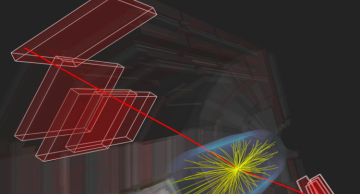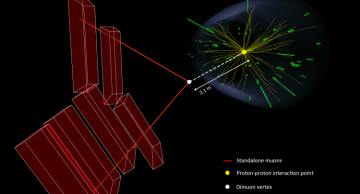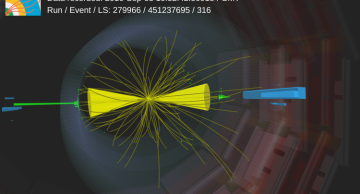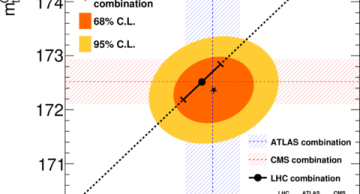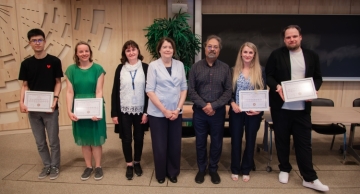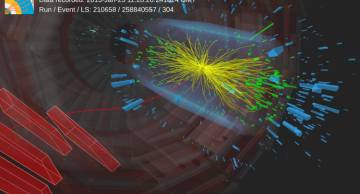The more collisions the better, right? To search for new physics, the aim of the LHC experiments at CERN is to collect and investigate as many proton-proton collisions as possible to increase the chances that undiscovered particles are created and…
News
|
sohurst |
Physics
Two key properties of neutrinos in the standard model of particle physics (SM) are that they are massless and “left-handed”, i.e. their spin is always opposite to their momentum. The observation of neutrino oscillations posed a big challenge to the…
|
ldelpian |
Physics
The first search for new physics using LHC data collected in Run 3 has been presented by CMS. It was shown during this year’s EPS conference in Hamburg and relied on both the new data and refinements of the trigger system made for Run 3. It marks…
|
ajafari |
Physics
At the subatomic level, interactions between particles are mediated through the exchange of special particles, the force carriers. In the case of electromagnetism, the force is transmitted by photons. They connect particles with electric charge (…
|
ajafari |
Physics
It is easy to recognize your friends in a street if they are standing or walking, but what if they are riding a supercar at a speed of 150 km per hour? In the Large Hadron Collider, if the energy of two partons from two colliding protons is about…
|
ajafari |
Physics
Among all the elementary particles, quarks and gluons (partons) are the only ones that cannot be observed in isolation. In high-energy collisions, such as those occurring at the Large Hadron Collider (LHC), partons undergo a few stages between their…
|
sohurst |
Physics
The ATLAS and CMS Experiments at CERN have just released a new measurement of the mass of the top quark. The new result combines 15 previous measurements to give the most precise determination of the top-quark mass to date.
Among the known…
|
sohurst |
Collaboration
Yesterday at 7:46 pm the first stable beams of the LHC 2023 heavy-ion run have been recorded. The heavy-ion run allows CMS scientists to study states of matter similar to those of the early universe.
During this period, the CERN accelerators operate…
|
sohurst |
Collaboration
Every year, at least three young researchers within the CMS Collaboration are recognised for their exceptional efforts and achievements with the CMS Young Researcher Prize! It is not only an endorsement of their outstanding skills and dedication,…
|
nstathak |
Collaboration
New release of simulations, proton-lead collision data, and proton reference data
The CMS experiment's extensive collection of heavy ion data from LHC Run-1 (2010–2013) is now accessible through the CERN Open Data portal. Today’s release of proton-…
|
ajafari |
Physics
A new search conducted by the CMS collaboration is exploring Higgs bosons with very high energy. Measuring how many high-energy Higgs bosons are created in proton-proton collisions can tell us about new Higgs interactions, either with known…
|
ajafari |
Physics
Very quickly after quarks are produced in proton-proton collisions, they radiate gluons (the mediators of the strong force between quarks) that in turn produce more particles that radiate gluons. This creates an avalanche of particles in the…

